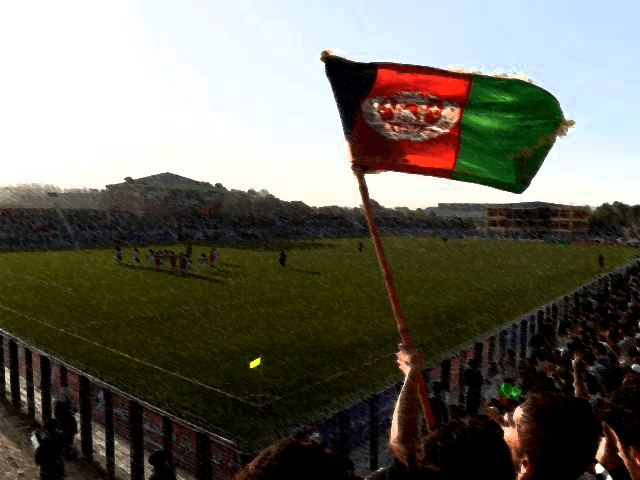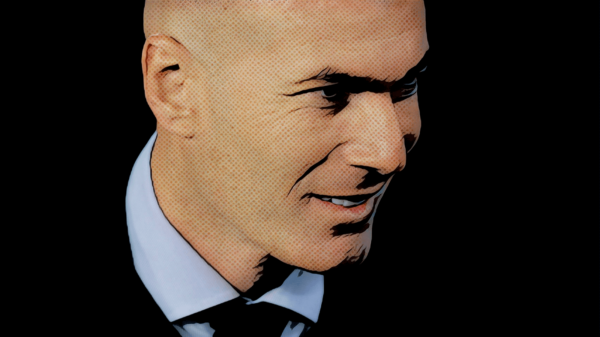
Football is truly a global game and the historical aspects of its growth in developing countries are quite fascinating. Phil Baki takes an in-depth look at the state of football in Afghanistan in this 3 part series. This first part focuses on its struggles in the 20th century…
Part I: Crumbling Foundations
“LT! Did you see last night? Barcelona FOUR to ZERO against AC Milan! Messi with 2, Villa and Alba all scored. Iniesta said they would win and they did!” This is what my interpreter, Johnny, said after Barcelona’s 4-0 win at the Nou Camp against AC Milan to overturn a 2-0 first leg deficit in the 2012-13 edition of the Champions League. Johnny isn’t his real name of course. He’s an Afghan national working for International Security Assistance Force (ISAF) soldiers in Afghanistan as a linguist. He was assigned to my platoon during my deployment to Operation Enduring Freedom 13. Champions League football can seem very distant from a Forward Operating Base in Kandahar Province, Afghanistan, but for Johnny that night, he was in the Nou Camp. For him however, football, and in particular Barcelona, is his escape from the harsh realities of his home. And for many Afghans, the same is true. Football is their oasis.
To set all of this up, I think you should know a little bit about myself. I am serving as a cavalry scout platoon leader in the 1st Brigade, 1st Armored Division out of Fort Bliss, Texas. We deployed to Kandahar Province, Afghanistan in December 2012 and operated in that area for just about nine months. During that time, our main mission was to set the conditions for a US troop drawdown that would continue until the force was fully reduced in 2014. It was vital during this time that we work with the Afghan National Army (ANA) and Afghan Uniformed Police (AUP) in order to set them up for success after the International Security Assistance Force (ISAF) was gone. So the obvious question is, what does any of that have to do with football?

Kandahar Province
When I first arrived in Afghanistan just before New Year’s Eve of 2012-13, I was introduced to Johnny and then shortly after was introduced to the soldiers of the ANA unit we would be working closely with. As a platoon leader, I was expected to do a lot of coordinating with my counterpart in the ANA. So during my first meeting with the Afghan Lieutenant, I was eager to establish a good relationship. Obviously, just as when you meet anyone new, there was some awkwardness at the beginning. Working with a linguist who I had only just met made things tougher. So when the ANA lieutenant asked me if I liked Real Madrid, I was excited. ‘Of course,’ I thought, ‘football is the world’s game. How had I not thought of this earlier?’ I told him rightly that if I had to pick a favorite Spanish team, it would have to be Barcelona. At that, he began arguing how Real Madrid was the superior team and how Cristiano Ronaldo was far better than Lionel Messi. Meanwhile, Johnny’s eyes had lit up like a scoreboard after a signature Messi goal.
After the meeting, which had gone fantastically because of the long discussion about football, Johnny was eager to continue the conversation. “LT, you’re a Barca fan?” he asked me. I explained that my real favorite team is Liverpool, but Barca is my favorite Spanish side. Over the course of a few months, Johnny and I had numerous conversations about football. The Champions League was a particular focus and obviously this run ended in disappointment for Johnny when Bayern Munich, the eventual champions, ended Barca’s journey. “Bayern deserved to win. They’re the best team in the world right now.” Tough words for any Cule to utter but other words come much easier to Johnny. “For me, Real Madrid are the same as the Taliban.” While this might be a bit of hyperbole, it demonstrates just how important football is to many Afghans. This is just one of many quotes disparaging Real Madrid, Cristiano Ronaldo, Pepe and any other Madridista who dared talk football anywhere near Johnny. I enjoyed his hate for Real Madrid as I have a soft spot for Barca. This was because of a trip I took to Barcelona in the summer of 2011. Visiting the Nou Camp was like visiting a football cathedral and it’s an experience I’ll always remember. For Johnny, the mere fact I had been there was unbelievable. Given the setting, and the state of football in Afghanistan, the Nou Camp seemed far off indeed.

Ghazi Stadium, Kabul
The Afghanistan Football Federation was founded in 1922 and joined FIFA in 1948. The first match for the Afghan Men’s National Team came in 1941 when they played Iran in a friendly in Ghazi Stadium in Kabul. It ended in a 0-0 draw. Shortly after joining FIFA, the team entered the 1948 Olympic Games in London, where they played European minnows Luxembourg and suffered a heavy 6-0 loss. The Asian Games offered a better competition and in 1951 they finished fourth in that competition. They were one of the founding members of the Asian Football Confederation (AFC) in 1956. Despite this, the National Team is evident of the state of football in the country. From the time they have been founded, much of the competition history includes decades of “did not enter” records. Competitions missed and through those competitions, opportunities missed. While football grew and grew in popularity across the world, Afghanistan’s National Team struggled to make a mark.
In December of 1979, Soviet tanks and troops rolled into Afghanistan to support the failing Communist government led by Babrak Karmal. The war between the Soviets and the Afghan Mujahideen raged for nine years, one month, and twenty-two days. During that time, sport in Afghanistan was practically nonexistent. The country was embroiled in Civil War and the fighting continued after the Soviets ended their involvement. In 1996, the Civil War was finally ended but the outcome would do no favors for Afghan Football either.
This was the year that the Taliban had risen to power. They formed in 1994 under the supervision of a Kandahar native named Mullah Omar. After nearly two years of fighting, they gained control of Kabul and established the Islamic Emirate of Afghanistan. The Taliban’s strict interpretation of Islam led to a ban of football for several years in the country. Ghazi Stadium in Kabul ceased to be a football stadium. It was used by the Taliban for public executions of those who were deemed enemies of the Taliban regime. This harsh rule continued until a fateful day in September.

Hamid Karzai meeting Afghan National Team players | Image
September 11, 2001 is a day that needs no explanation. Suffice it to say that the tragedy on that day sparked a United States military response in order to remove Al-Qaeda and their Taliban hosts from Afghanistan. With support from the US, Afghan forces known as the Northern Alliance, led by current President Hamid Karzai, retook Afghanistan from the Taliban. With this came the current period of shaky security and reconstruction, both of the country, and of football as well.
Part II →
Written by Phil Baki
- Talent Radar: Bundesliga 10 Young Players (U-19) to Watch in 2016-17 - September 6, 2016
- Hipster Guide 2016-17: Middlesbrough’s tactics, key players, and emerging talents - August 11, 2016
- Im Herzen Vereint: The Incredible Story of Dynamo Dresden - July 13, 2016



























































